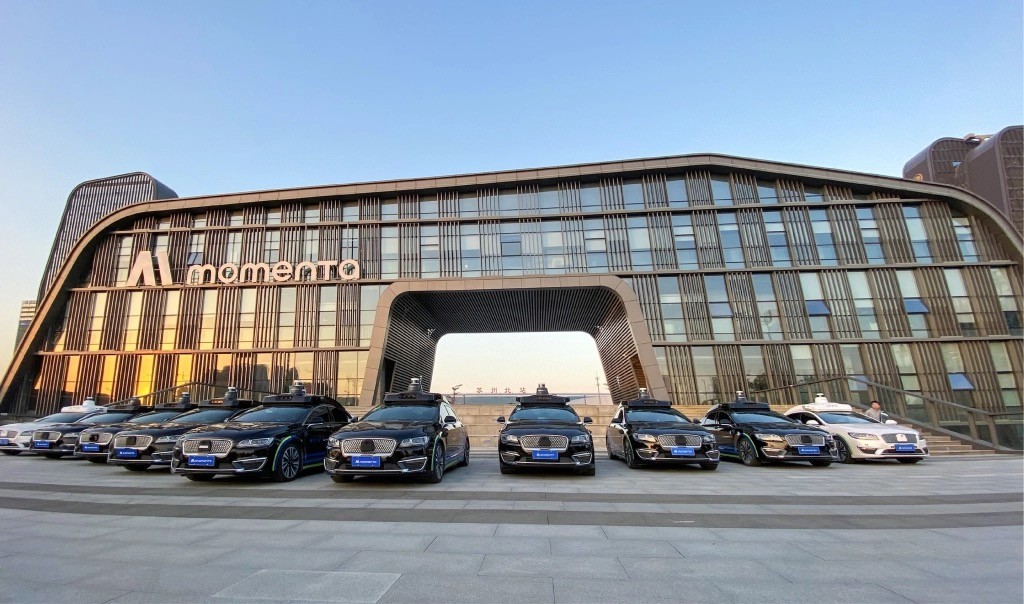中国无人驾驶出租车或将很快进入美国
忘掉驾校吧。在不久的将来,教汽车开车比教人开车更有用。
如果不留意,可能意识不到人工智能的存在,但人工智能正在上海和苏州的大街上让汽车教汽车如果自动驾驶,这是中国最大的汽车制造商上汽集团(SAIC Motor)和总部位于苏州的人工智能公司Momenta的合作成果。
从2021年12月到2022年3月,这两家公司在上述两个特大城市共投放了60辆无人驾驶出租车,以检验这项技术的使用前景。已经有数千名中国乘客通过手机叫车搭乘了这些无人驾驶出租车出行,车内仍配有人类操作员,万一出现紧急情况可以控制车辆。Momenta表示,80%的乘客在初体验后至少又约过两次他们的车,证明了这项服务的“巨大潜力”。
现在,该公司正在努力向通用汽车(General Motors)、梅赛德斯-奔驰(Mercedes-Benz)和其他数十家汽车制造商推广这项技术,目标是在未来几年内推出乘用车。但Momenta的首席执行官曹旭东表示,首先,必须要积累1000亿英里的驾驶数据。

包括Cruise和Argo AI在内,美国和世界各地有几十家公司都在开发下一代自动驾驶汽车系统。但Momenta的战略定位或许可以更快地实现这一目标。和其他公司一样,Momenta的机器学习系统也会对人类驾驶员成百上千万次的操作进行观察记录,但它没有以此为基础编制驾驶规则代码,而是让这些数据直接指导其他汽车。
与竞争对手相比,该公司还有两个关键优势:可以获得高清的中国公路图,与高销量汽车制造商达成了重要合作关系,这些车企本就已经在收集大量汽车驾驶数据。通用汽车、梅赛德斯-奔驰、丰田(Toyota)、汽车零部件供应商博世(Bosch)等公司已向Momenta投资超过10亿美元,推动自动驾驶的加快发展。
“解决可扩展的自主问题面临巨大挑战。“曹旭东向本刊表示,“客户一旦看到我们能够为大规模生产程序开发算法,就能理解我们的能力。”
传统的基于规则的机器学习方法的编码逻辑是让汽车对特定刺激做出反应。“如果发生了X,就做Y动作。”密歇根大学机械工程副教授拉姆·瓦苏代万说,“如果汽车摄像头看到停车标志,就停车。”开发人员将各种操作规则编写到软件中,比如改变车道时该做什么,如何在静止的车辆周围移动等等。例如,当汽车左转时,汽车的内置程序会先计算其轨迹,汽车会相应减速。
但只要开过车的人都知道,路况并不总是这么直来直去的。举一个经典例子:一个小孩突然冲出来追球,司机要决定是刹车还是转向。大多数公司预先设定的策略都是变道,但Momenta的数据会教会汽车考虑其他因素,比如天气和时间。
这就是为什么Momenta放弃了基于规则的算法,从零开始训练汽车。“Momenta做的是真正的人工智能,”瓦苏代万说。

“数据驱动”的端到端学习方法实现起来要困难得多,成本也高得多。该公司合作伙伴生产的汽车在路上行驶的数百万英里可以帮助汽车学习在各种环境中驾驶,与已经投入了数十亿美元用于大规模生产自有自动驾驶汽车的车企合作是生产如此大量数据的唯一方法。
Momenta方法的优势在于它可以处理更复杂的情况和细微差别。“你怎么能确定你已经预先把每一条规则都设定好了?”瓦苏代万说。“难点在于你需要大量标注过的数据,才能为每一种驾驶场景编制规则。即使这样,也仍然可能存在某种你没有编进自动驾驶堆栈中的场景。”
自动驾驶市场正在迅速增长。Momenta预计,到2025年,将有近6000万辆汽车配备2级或3级高级驾驶员辅助系统,这是进阶到全自动驾驶汽车的跳板。
今年3月,美国联邦监管机构规定,制造商不再需要为全自动驾驶汽车配备方向盘、制动踏板或某些其他手动驾驶控制装置。这为美国汽车制造商开始在公共道路上大规模测试自动驾驶车型铺平了道路。
通用汽车旗下的Cruise和Alphabet旗下的Waymo拿到了加州机动车辆管理局(Department of Motor Vehicles)的许可,可以在有限条件下在公共道路上运营无人驾驶出租车。特斯拉首席执行官埃隆·马斯克在今年4月的季度财报电话会议上表示,该公司计划在2024年前开发一款不配备方向盘或制动踏板的自动驾驶出租车。马斯克说:“我认为这绝对会推动特斯拉大幅增长。”(财富中文网)
译者:Agatha
忘掉驾校吧。在不久的将来,教汽车开车比教人开车更有用。
如果不留意,可能意识不到人工智能的存在,但人工智能正在上海和苏州的大街上让汽车教汽车如果自动驾驶,这是中国最大的汽车制造商上汽集团(SAIC Motor)和总部位于苏州的人工智能公司Momenta的合作成果。
从2021年12月到2022年3月,这两家公司在上述两个特大城市共投放了60辆无人驾驶出租车,以检验这项技术的使用前景。已经有数千名中国乘客通过手机叫车搭乘了这些无人驾驶出租车出行,车内仍配有人类操作员,万一出现紧急情况可以控制车辆。Momenta表示,80%的乘客在初体验后至少又约过两次他们的车,证明了这项服务的“巨大潜力”。
现在,该公司正在努力向通用汽车(General Motors)、梅赛德斯-奔驰(Mercedes-Benz)和其他数十家汽车制造商推广这项技术,目标是在未来几年内推出乘用车。但Momenta的首席执行官曹旭东表示,首先,必须要积累1000亿英里的驾驶数据。
包括Cruise和Argo AI在内,美国和世界各地有几十家公司都在开发下一代自动驾驶汽车系统。但Momenta的战略定位或许可以更快地实现这一目标。和其他公司一样,Momenta的机器学习系统也会对人类驾驶员成百上千万次的操作进行观察记录,但它没有以此为基础编制驾驶规则代码,而是让这些数据直接指导其他汽车。
与竞争对手相比,该公司还有两个关键优势:可以获得高清的中国公路图,与高销量汽车制造商达成了重要合作关系,这些车企本就已经在收集大量汽车驾驶数据。通用汽车、梅赛德斯-奔驰、丰田(Toyota)、汽车零部件供应商博世(Bosch)等公司已向Momenta投资超过10亿美元,推动自动驾驶的加快发展。
“解决可扩展的自主问题面临巨大挑战。“曹旭东向本刊表示,“客户一旦看到我们能够为大规模生产程序开发算法,就能理解我们的能力。”
传统的基于规则的机器学习方法的编码逻辑是让汽车对特定刺激做出反应。“如果发生了X,就做Y动作。”密歇根大学机械工程副教授拉姆·瓦苏代万说,“如果汽车摄像头看到停车标志,就停车。”开发人员将各种操作规则编写到软件中,比如改变车道时该做什么,如何在静止的车辆周围移动等等。例如,当汽车左转时,汽车的内置程序会先计算其轨迹,汽车会相应减速。
但只要开过车的人都知道,路况并不总是这么直来直去的。举一个经典例子:一个小孩突然冲出来追球,司机要决定是刹车还是转向。大多数公司预先设定的策略都是变道,但Momenta的数据会教会汽车考虑其他因素,比如天气和时间。
这就是为什么Momenta放弃了基于规则的算法,从零开始训练汽车。“Momenta做的是真正的人工智能,”瓦苏代万说。
“数据驱动”的端到端学习方法实现起来要困难得多,成本也高得多。该公司合作伙伴生产的汽车在路上行驶的数百万英里可以帮助汽车学习在各种环境中驾驶,与已经投入了数十亿美元用于大规模生产自有自动驾驶汽车的车企合作是生产如此大量数据的唯一方法。
Momenta方法的优势在于它可以处理更复杂的情况和细微差别。“你怎么能确定你已经预先把每一条规则都设定好了?”瓦苏代万说。“难点在于你需要大量标注过的数据,才能为每一种驾驶场景编制规则。即使这样,也仍然可能存在某种你没有编进自动驾驶堆栈中的场景。”
自动驾驶市场正在迅速增长。Momenta预计,到2025年,将有近6000万辆汽车配备2级或3级高级驾驶员辅助系统,这是进阶到全自动驾驶汽车的跳板。
今年3月,美国联邦监管机构规定,制造商不再需要为全自动驾驶汽车配备方向盘、制动踏板或某些其他手动驾驶控制装置。这为美国汽车制造商开始在公共道路上大规模测试自动驾驶车型铺平了道路。
通用汽车旗下的Cruise和Alphabet旗下的Waymo拿到了加州机动车辆管理局(Department of Motor Vehicles)的许可,可以在有限条件下在公共道路上运营无人驾驶出租车。特斯拉首席执行官埃隆·马斯克在今年4月的季度财报电话会议上表示,该公司计划在2024年前开发一款不配备方向盘或制动踏板的自动驾驶出租车。马斯克说:“我认为这绝对会推动特斯拉大幅增长。”(财富中文网)
译者:Agatha
Forget driver’s ed. Soon teaching a car to drive will be more effective than teaching a human.
Artificial intelligence may be invisible to the unsuspecting eye, but it’s already at work on city streets in Shanghai and Suzhou, where cars are teaching each other how to drive themselves, thanks to a partnership between SAIC Motor, China’s largest automaker, and Suzhou-based artificial intelligence company Momenta.
Together the companies deployed 60 robotaxis across the two megacities from December 2021 through March 2022 to validate the technology for use in the cars of the future. Using a smartphone app, thousands of city dwellers in China completed their errands by summoning the robotaxis staffed with human operators who could take control in a potential emergency. Momenta says that 80% of riders used the app at least twice after their initial trial, demonstrating the “vast potential” of the service.
Now the company is working toward scaling its technology for General Motors, Mercedes-Benz, and dozens of other automakers with the goal of launching inside passenger vehicles within the next several years. But first, Momenta CEO Cao Xudong says, it must amass 100 billion miles of driving data.
Dozens of companies in the U.S. and around the world, including Cruise and Argo AI, are developing next-generation systems for autonomous cars. But Momenta’s strategy may be positioned to bring it to fruition faster. Like others, its machine learning observes and clocks millions of maneuvers made by human drivers, but instead of using those actions as the basis for hardcoded driving rules, Momenta lets the data instruct the other cars directly.
The company also has two key advantages over competitors: access to China’s high-definition road maps and significant partnerships with mass-market carmakers who are already collecting data from tens of thousands of cars on the road. General Motors, Mercedes-Benz, Toyota, auto parts supplier Bosch, and others have invested more than $1 billion in Momenta to accelerate the development of autonomous driving.
“The challenge of solving scalable autonomy is massive,” Xudong tells Fortune. “When customers see we are able to develop algorithms for mass production programs, they understand our capability.”
The traditional rules-based approach to machine learning programs the cars to respond to a stimulus with a specific action. “If X happens, you do Y,” says Ram Vasudevan, associate professor of mechanical engineering at the University of Michigan. “If the car’s camera reads a stop sign, you stop.” Developers hardcode the software with rules for various maneuvers such as what to do when changing lanes or how to move around a stationary vehicle. When making a lefthand turn, for instance, the car is programmed to precompute its trajectory and slow down accordingly.
But anyone who has driven a car knows that traffic situations aren’t always so straightforward. Take the classic example: A child runs out into the street in pursuit of a ball, leaving the driver to decide whether to brake or swerve. Most companies pre-program a lane-change maneuver, but Momenta’s data teaches the car to consider other factors, such as the weather and time of day.
That’s why Momenta forgoes rules-based algorithms to train cars from scratch. “What Momenta is doing is truly artificial intelligence,” Vasudevan says.
The “data-driven,” end-to-end learning approach is much harder and more expensive to pull off. The millions of miles its partners log on the road help cars learn to drive in a range of environments, and the only way to generate such volumes of data is to collaborate with automakers who are already investing billions of dollars toward mass producing their own autonomous vehicles.
The advantage of Momenta’s approach is that it can handle more complex situations and nuances. “How do you know that you’ve preprogrammed all the rules out there?” Vasudevan says. “The challenge is that you’re going to need lots of labeled data in order to create a rule for every driving scenario. Even after all of that, there may be a situation that you haven’t programmed into your autonomous stack.”
The market for autonomous driving is growing rapidly. By 2025, Momenta expects that nearly 60 million vehicles will come equipped with Level 2 or 3 advanced driver assistance systems, the stepping stone to fully self-driving cars.
In the U.S., federal regulators ruled in March that manufacturers no longer need to equip fully autonomous vehicles with steering wheels, brake pedals, or certain other manual driving controls. This paves the way for American automakers to begin testing their models at scale on public roads.
GM-owned Cruise and Alphabet’s Waymo received permits from the California Department of Motor Vehicles to operate robotaxis on public roads under limited conditions, and Tesla CEO Elon Musk said during the company’s quarterly earnings call in April that the automaker plans to develop a robotaxi without a steering wheel or pedals by 2024. "I think that that really will be a massive driver of Tesla's growth,” Musk said.













